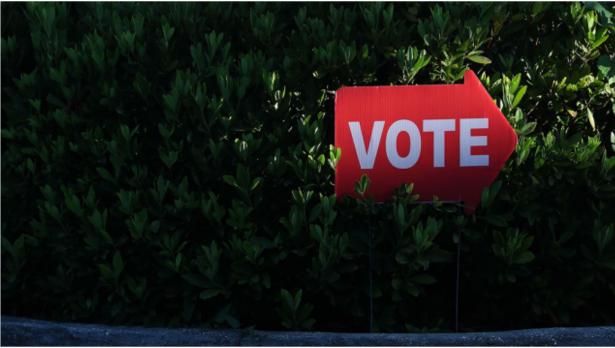The midterm elections have been marred by controversy over alleged voter suppression in Georgia, North Dakota and elsewhere. Once again, partisans want to make it harder for fellow citizens to cast their ballots. It’s ugly.
But amid the dispiriting bid to curb voting, something else is happening: For the first time in years, citizens have responded with a robust push to expand democratic rights. Breakthrough ballot measures across the country would expand voting rights and improve representation. If enacted, they could add up to a democracy wave, regardless of which party prevails.
Start with Florida, where the presidential recount in 2000 launched the recent voting wars. The state has an extraordinarily harsh felony disenfranchisement law, one that dates to the Jim Crow era and bars citizens with any kind of felony conviction from voting for a lifetime. A drug-possession conviction at 18 means a 60-year-old can’t cast a ballot. Today, 1.6 million otherwise eligible Floridians are disenfranchised, including 1 in 5 black people of voting age.
A measure on the ballot this November would restore rights for most people with criminal convictions. The proposal must win 60 percent of the vote to pass, but recent polling shows nearly three-fourths of voters support it. Notably, the measure has united religious communities and skirted ideological splits. (The Koch-backed organization Freedom Partners gave a ringing endorsement.) Formerly incarcerated people have led the drive, going door to door to drum up support.
Then there’s partisan gerrymandering. Politicians have manipulated district lines since the country’s founding, but computers have transformed gerrymandering into a precision mechanism to blunt the voice of voters. This year, the Supreme Court declined to make a major constitutional ruling to restrict extreme partisan gerrymandering. With Justice Brett M. Kavanaugh replacing Anthony M. Kennedy, hopes have dimmed for a legal breakthrough at the court.
Here, too, while courts dither, citizens have acted. The best reform would have district lines drawn by a nonpartisan, independent commission, as in Arizona and California. In Michigan, despite a rebuff at first from party leaders and labor unions, activists are on track to garner 400,000 signatures for a ballot measure to create a nonpartisan panel to draw future districts. Similar reforms are on the ballot in Utah and Colorado. Missouri voters will decide on a different but strong approach. Earlier this year, Ohio voters backed a measure to block the legislature from redistricting on a partisan basis.
This is all quite extraordinary. Gerrymandering was an arcane topic beloved only by political science professors and tobacco-stained party bosses. Last decade, similar reform efforts failed in states including Ohio and California. It speaks volumes about our electoral breakdown that ordinary citizens now seem to understand how badly the system is tilted.
Voters are also tackling one of the biggest barriers to effective elections: our ramshackle voter registration system. Today voters can fall off the rolls when they move or if there’s a typo in their state’s records. Some people never manage to sign up to vote in the first place. We are alone among major democracies in running our system this way.
At least 13 states, though, have approved a version of automatic voter registration that uses data supplied at their departments of motor vehicles or other agencies to securely and accurately update registration information. This paradigm shift would add tens of millions of people to the rolls, reduce costs and bolster election security. Next month, Nevada and Michigan voters will decide whether to adopt strong versions of the plan.
Will elected officials heed this shout from the electorate? Some signs are positive. House Democrats announced they will make democracy reform the basis of their first piece of legislation — the auspiciously named H.R. 1 — should they win. It would include national rules on automatic voter registration, redistricting reform and small-donor public financing of campaigns to curb the role of big money. Dozens of new members may form a reform caucus akin to the class of “Watergate babies” who won in 1974 and transformed Congress.
But don’t trust incumbents to act, regardless of what they say. In the weeks after the midterms, we need to press lawmakers to put their votes where their tweets are. We also need to keep an eye out for legal challenges against these measures from forces that stand to lose from a fairer system. Conservative activists could try to convince the Supreme Court’s new conservative majority that ballot measures instituting electoral reform are unconstitutional. If the Supreme Court tries to choke off the voice of the voters, it would demolish public confidence and provoke a constitutional crisis.
For now, all eyes are on election night. This is not just an important midterm cycle politically speaking; it’s also a chance for democracy itself to prevail at the ballot box.
Michael Waldman is President of the Brennan Center for Justice at NYU School of Law, a nonpartisan law and policy institute that focuses on improving the systems of democracy and justice. Waldman is a constitutional lawyer and writer, and is an expert on the presidency and American democracy. He is the author of The Fight to Vote (Simon & Schuster, 2016), a history of the struggle to win voting rights for all citizens.
This article is cross-posted from The Washington Post.


Spread the word